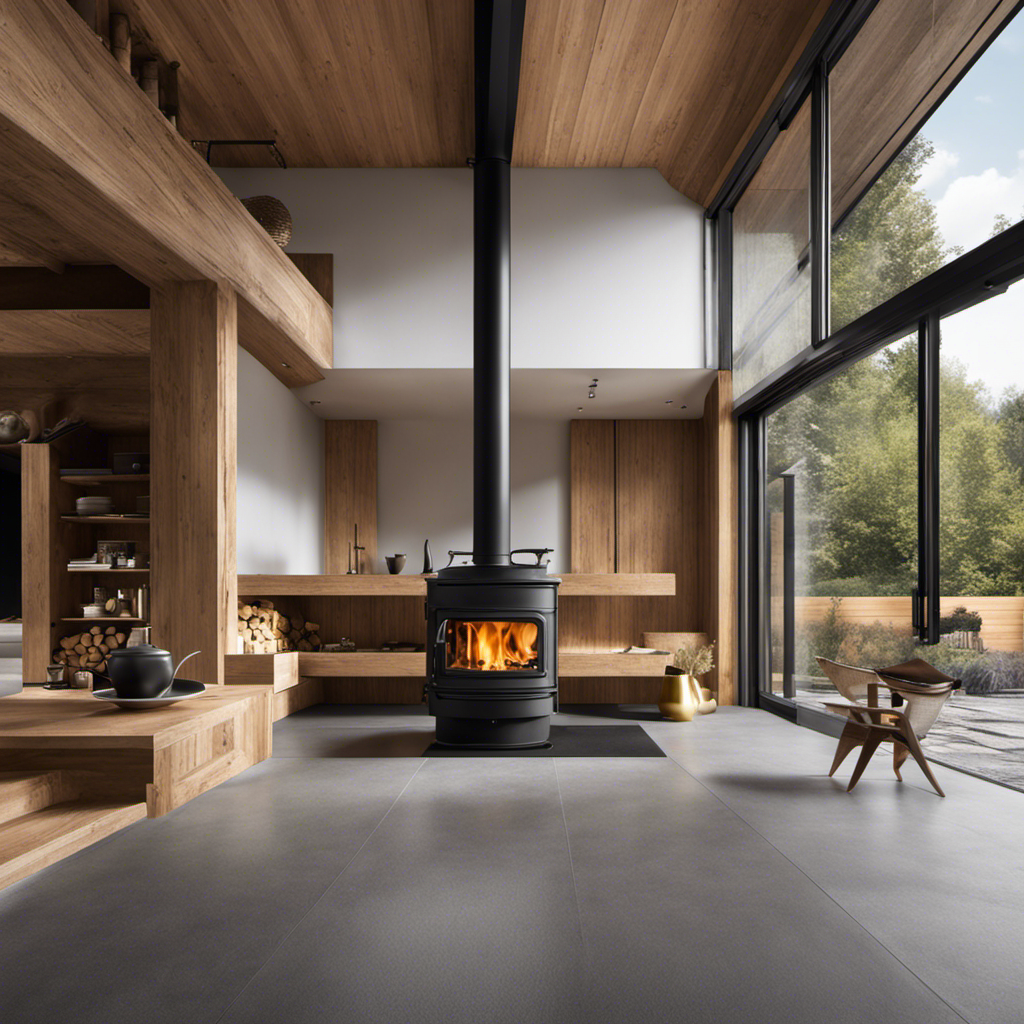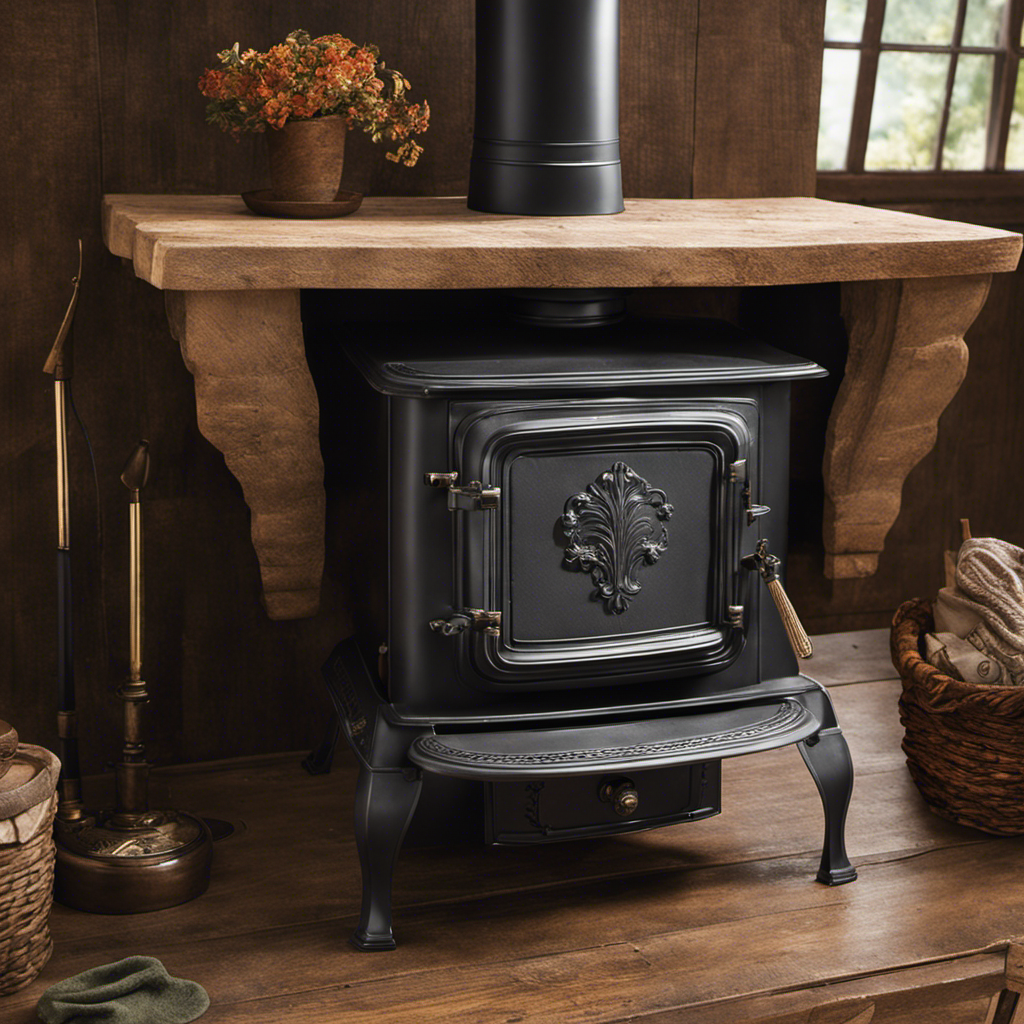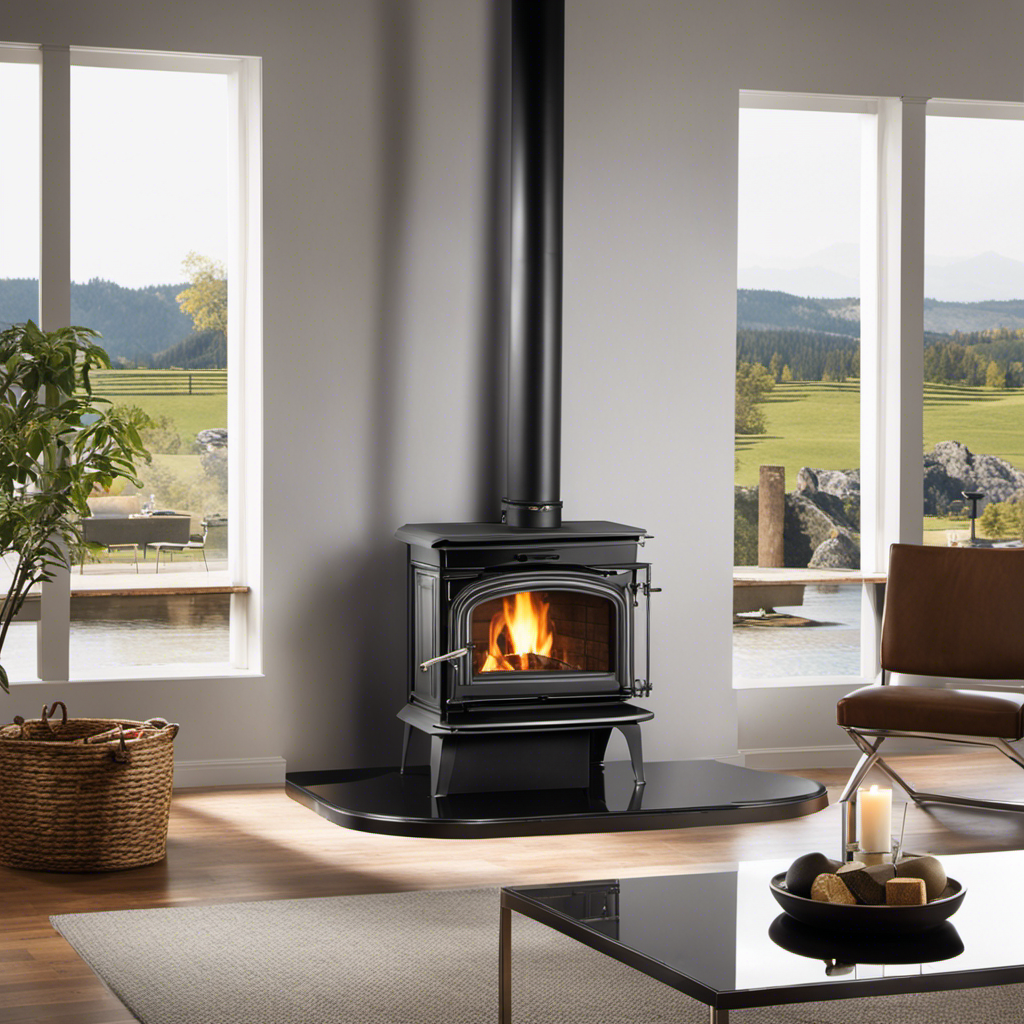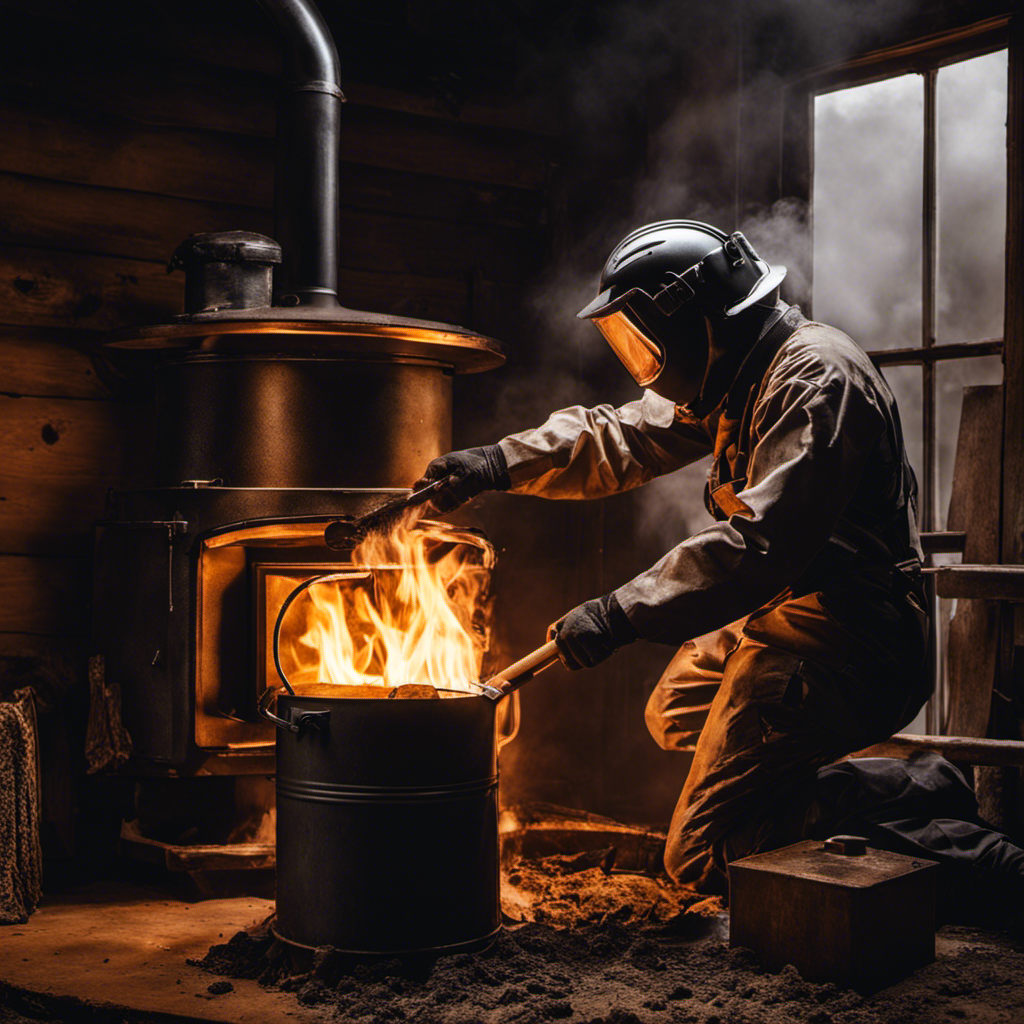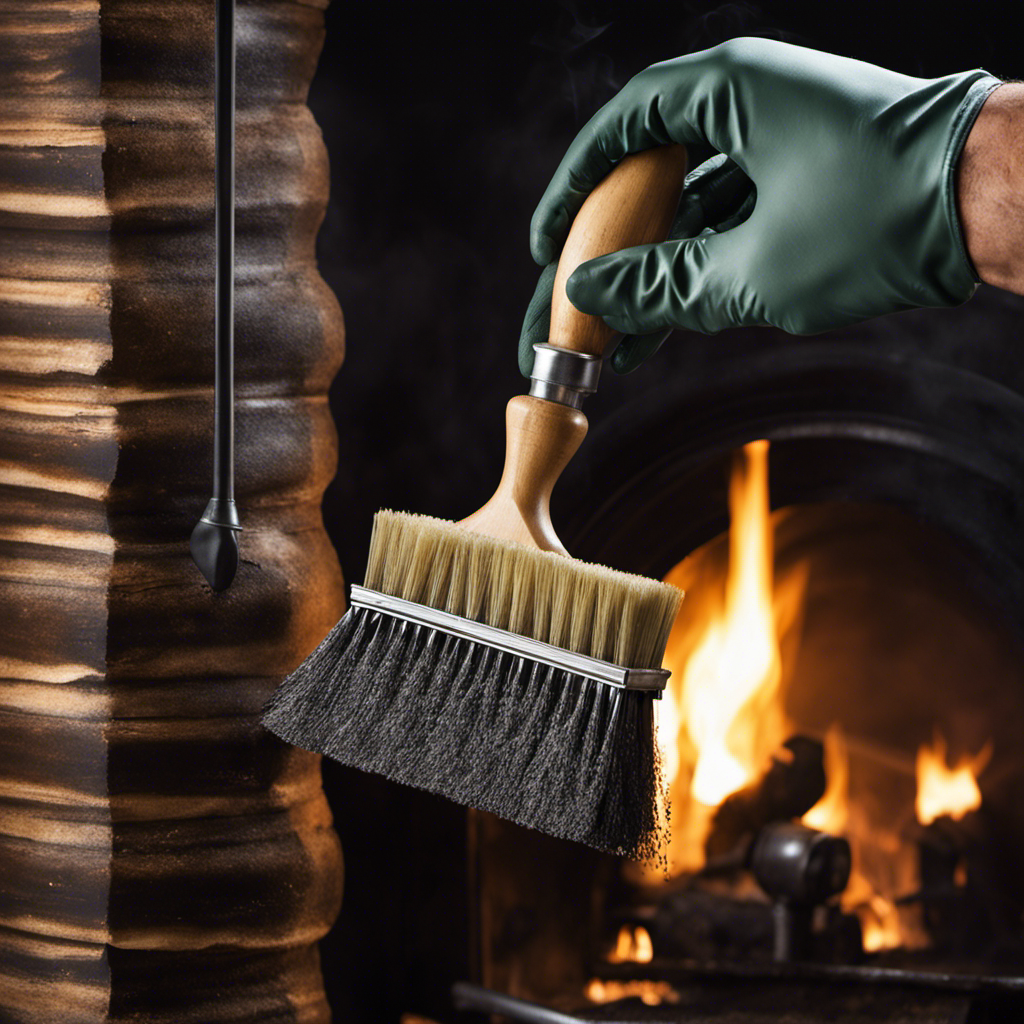In order to install a wood stove as a homeowner, it is important to have a clear understanding of the load-bearing requirements for your flooring.
Did you know that the average weight of a wood stove can range from 300 to 600 pounds? This statistic highlights the importance of ensuring your floor can withstand the load.
In this article, I will delve into the factors to consider, including flooring materials, building codes, and methods for strengthening your floor to safely accommodate a wood stove.
Key Takeaways
- Determining the total weight of the wood stove, including accessories, is crucial for calculating the load-bearing capacity required for the floor.
- Consulting a structural engineer and conducting a thorough assessment is crucial to determine the floor’s load-bearing capacity.
- Strengthening the floor with additional support beams, thicker plywood, or reinforcing joists may be necessary to increase load-bearing capacity.
- Proper insulation between the wood stove and flooring helps prevent heat transfer and minimize the risk of damage.
Weight of the Wood Stove
I’m considering the weight of the wood stove before installing it on the floor. Ensuring proper weight distribution is crucial to prevent any damage or safety hazards.
To begin, I need to determine the total weight of the stove, including any accessories or additional components. This will help me calculate the load-bearing capacity required for the floor.
It’s also essential to consider the floor insulation. Insufficient insulation can lead to heat transfer and potential damage to the floor. To address this, I’ll assess the insulation’s thickness and material to ensure it meets the necessary standards.
Flooring Material Considerations
Before deciding on the flooring material, it’s important to consider factors such as durability, maintenance requirements, and cost.
When it comes to flooring installation for a wood stove, heat resistance is a crucial consideration. The intense heat generated by the stove can pose a risk of damage to certain flooring materials.
To ensure a safe and long-lasting installation, here are three key factors to consider:
-
Heat resistance: Choose a flooring material that’s specifically designed to withstand high temperatures. Options like ceramic tile, stone, or concrete are excellent choices due to their ability to handle heat without warping or cracking.
-
Insulation: Proper insulation between the wood stove and the flooring can help prevent heat transfer and minimize the risk of damage. Use a high-quality heat-resistant underlayment or insulation board to create a protective barrier.
-
Maintenance: Consider the maintenance requirements of the flooring material. Some materials may require more frequent cleaning or sealing to maintain their heat resistance properties.
Building Codes and Regulations
I’ve researched the building codes and regulations regarding wood stove installations, and it’s important to comply with these standards to ensure safety and avoid any potential legal issues. When it comes to installing a wood stove, building permits and safety regulations play a crucial role.
Firstly, obtaining a building permit is necessary to ensure that the installation is done according to the established guidelines and codes. This permit allows the local authorities to inspect and verify that the installation meets the safety regulations.
Additionally, complying with safety regulations is essential for the protection of both the occupants and the property. These regulations typically cover aspects such as proper clearance from combustible materials, adequate ventilation, and the use of approved materials for the stove and chimney construction.
Determining Load-Bearing Capacity
To determine the load-bearing capacity of the floor, I’ll consult the structural engineer and conduct a thorough assessment. This is crucial to ensure that the floor can safely support the weight of a wood stove and prevent any structural failures or accidents.
During the assessment, I’ll consider various factors such as the material and construction of the floor, the existing load on the floor, and the location of the wood stove. Based on the findings, I’ll determine if any structural reinforcement is required to increase the load-bearing capacity.
Possible options for structural reinforcement include:
- Adding additional support beams or columns to distribute the weight more evenly.
- Strengthening the floor by adding thicker plywood or reinforcing joists.
- Redistributing the load by relocating heavy furniture or appliances in the area.
Strengthening the Floor for a Wood Stove
However, I frequently reinforce the floor by adding additional support beams and thicker plywood to ensure the wood stove’s stability. When it comes to wood stoves, safety is paramount. Not only do I want to prevent any accidents or damage to the stove, but I also want to minimize the risk of fire hazards. To achieve this, I take certain precautions and use specific insulating materials. In terms of safety precautions, I always make sure to install a heat shield behind the stove to protect the wall from excessive heat. Additionally, I use fire-resistant insulation materials such as ceramic fiber boards or vermiculite boards to create a barrier between the stove and the floor. This helps in preventing any heat transfer to the floor and reduces the risk of structural damage or fire. By following these guidelines and reinforcing the floor properly, I can enjoy the warmth of my wood stove with peace of mind.
| Safety Precautions | Insulating Materials |
|---|---|
| Install heat shield | Ceramic fiber boards |
| Use fire-resistant insulation | Vermiculite boards |
| Reinforce floor | Thicker plywood |
Frequently Asked Questions
Can I Place a Wood Stove on a Carpeted Floor?
Placing a wood stove on a carpeted floor has pros and cons. On one hand, it provides insulation and a cozy look. However, the potential risks include fire hazards and damage to the carpet.
Are There Any Specific Height Restrictions for Installing a Wood Stove?
Floor height restrictions and safety precautions are vital when installing a wood stove. As for the question at hand, it is crucial to consider the strength of the floor to ensure the stove’s stability and prevent any potential accidents.
How Do I Calculate the Weight of a Wood Stove to Ensure It Doesn’t Exceed the Floor’s Capacity?
To calculate the weight capacity of a wood stove, I need to determine the total weight of the stove and ensure it is evenly distributed. This will help me determine the strength requirements for the floor.
Are There Any Alternative Flooring Options That Are Recommended for Supporting the Weight of a Wood Stove?
There are alternative flooring options available to support the weight of a wood stove. To ensure safety, it is crucial to calculate the weight capacity accurately. Let’s explore these options and the importance of precise calculations.
Do I Need to Obtain Any Permits or Licenses Before Installing a Wood Stove in My Home?
I need to check the permit requirements and safety regulations before installing a wood stove in my home. It is crucial to follow these guidelines to ensure the installation is done correctly and safely.
Conclusion
In conclusion, it’s crucial to ensure that the floor is strong enough to support the weight of a wood stove. While building codes and regulations provide guidelines, it’s important to consider the weight of the stove and the load-bearing capacity of the flooring material.
Anticipating objections about the cost and effort required, it’s important to prioritize safety and follow the necessary steps to strengthen the floor, ensuring a secure and stable installation of the wood stove.
Growing up surrounded by the vast beauty of nature, Sierra was always drawn to the call of the wild. While others sought the comfort of the familiar, she ventured out, embracing the unpredictable and finding stories in the heartbeat of nature.
At the epicenter of every remarkable venture lies a dynamic team—a fusion of diverse talents, visions, and passions. The essence of Best Small Wood Stoves is crafted and refined by such a trio: Sierra, Logan, and Terra. Their collective expertise has transformed the platform into a leading authority on small wood stoves, radiating warmth and knowledge in equal measure.

